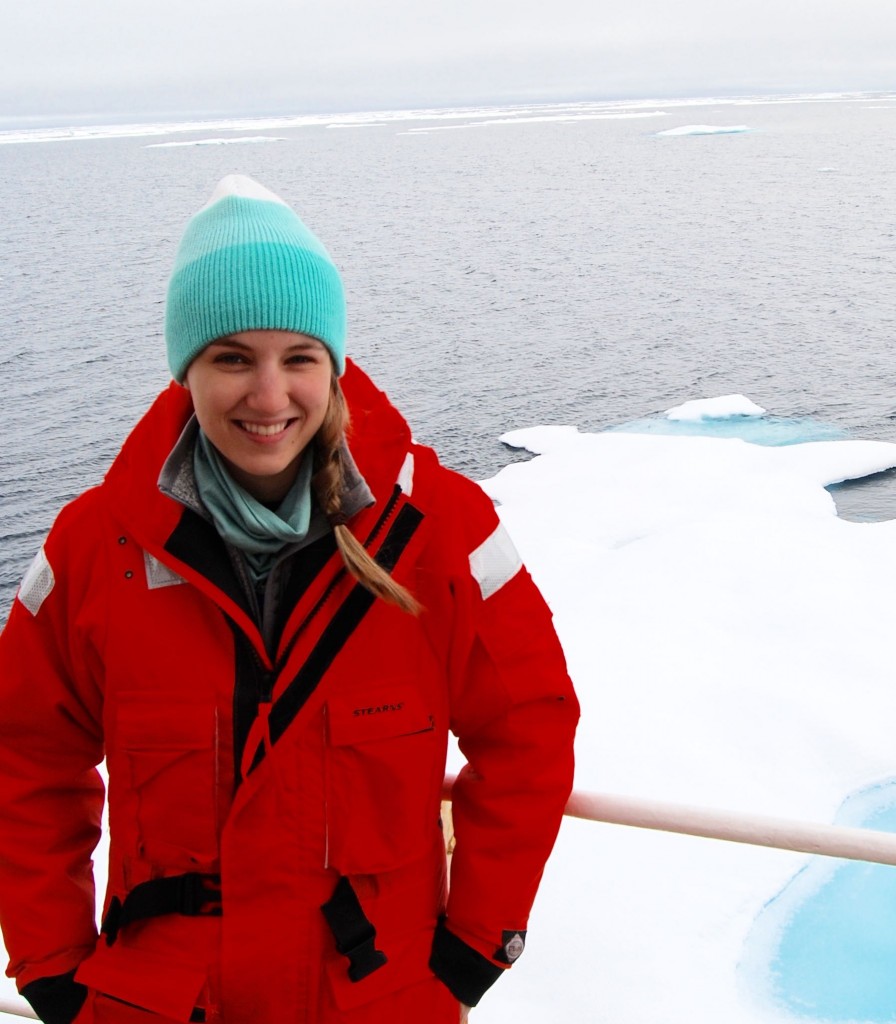Featured Stories, MIT, News, WHOI | March 30, 2017
Institute Award for the Love of Marine Chemistry
MIT-WHOI student Lauren Kipp to receive a Graduate Teaching Award

By Lauren Hinkel
Each year MIT’s Graduate Student Council (GSC), which works to enhance the overall graduate experience, bestows four Institute Awards, honoring and thanking faculty and students for their invaluable contributions to the graduate community. Recipients of the prestigious Graduate Teaching Awards (one for each school), Frank E. Perkins Award for Excellence in Graduate Advising, Edward L. Horton Fellowship Award, and the Irwin Sizer Award for Most Significant Improvement to MIT Education are selected from colleague nominations and will be recognized at convocation ceremony on May 1st, in MIT’s Samberg Conference Center.
This year, the School of Science’s Graduate Teaching Award, which is presented to a faculty member and/or a teaching assistant for excellence in teaching graduate courses, will be presented to Lauren Kipp, a graduate student in the MIT-WHOI Joint Program and MIT’s Program in Atmospheres, Oceans and Climate (PAOC) of the EAPS Department. Kipp is being recognized for her work as a Marine Chemistry teaching assistant for Fall 2016.
The Marine Chemistry class is a required, introductory course on chemical oceanography for students in the MIT-WHOI Joint Program. Taught by WHOI’s marine chemistry and geochemistry department chair Scott Doney and senior scientist Ben Van Mooy, the class has a broad scope – covering basic principles from seawater polarity, salinity and the carbonate system, to isotopes, box models, solving for an unknown source or sink, sediment chemistry, and biogeochemical cycles. “Marine Chemistry is a very difficult course for many students, because it covers a very broad range of topics, which may be more or less familiar depending on a student’s background,” said Van Mooy. “Also, chemical oceanography requires a strange combination of both a quantitative and descriptive knowledge of the ocean. Most of our estimates of large-scale processes – for example the amount of carbon that makes its way from the atmosphere to the deep-sea – are empirically defined, highly imprecise, and rest on unsettlingly simple assumptions. This can be difficult for incoming students to deal with.”
But Kipp was up for the task. Having previously taken the course and worked through its complexities herself, she had developed an arsenal of teaching tactics to address the material. Kipp, “excelled in coming up with new ways to help us learn, integrating interactive technologies into our recitation sessions. If every course had a TA like Lauren, students across the board would be succeeding at a much higher rate,” wrote Jennifer Kenyon, a fellow MIT-WHOI Joint Program student, in her nomination. Kipp’s work ethic and ingenuity did not go unnoticed by the professors or students. Her dedication to the course and the study of marine chemistry were some of the reasons she was such an “effective” instructor and, “…the best TA I have ever had.”
When Kipp isn’t assisting students with chemical oceanography, she’s focused on her own research. For her thesis work on “Radium isotopes as tracers of boundary input of nutrients and trace elements to the coastal and open ocean”, Kipp is investigating how radium, a naturally occurring radioactive element produced in sediment, makes its way into the ocean around coastlines and margin sources. Since radium decays in a characteristic manner, she can use it to trace the shelf or sediment input on a water mass as it moves away from the coast and examine rates of mixing around these boundaries.
Kipp collected most of her data from the GEOTRACES program, which is an international collaboration studying the sources and cycling of elements in the ocean. One cruise took her to the Arctic where she worked with other groups to sample seawater for radium as well as other elements. She’s looking at the impacts different radium sources have on the central Arctic ocean and, in the future, hopes to explore how radium could be used to track Arctic ocean changes due to climate change, like increased mixing from sea ice retreat or sediment release from permafrost thaw. Other parts of her work include radium input from and dynamics around hydrothermal vents, as well as sediment core and water samples from Canada’s Mackenzie River estuary, which Kipp hopes to chemically characterize and combine with data from Arctic GEOTRACES cruise in the open ocean.
After graduation, expected summer of 2018, Kipp plans to pursue Arctic research in academia and hopefully, one day, teach her own marine chemistry classes. Looking back on her recent teaching assistant experience, Kipp picked up many lessons and tips, but she said her biggest takeaway was confirmation of her love for chemical oceanography and the confidence that this is the career path for her. “It just makes me happy to be able to help people understand the subject and hope that they will appreciate it as much as I do,” Kipp said. “I think that’s what drives me to want to teach in the first place.”

 Geotraces: Building a Periodic Table for the Ocean
Geotraces: Building a Periodic Table for the Ocean


